

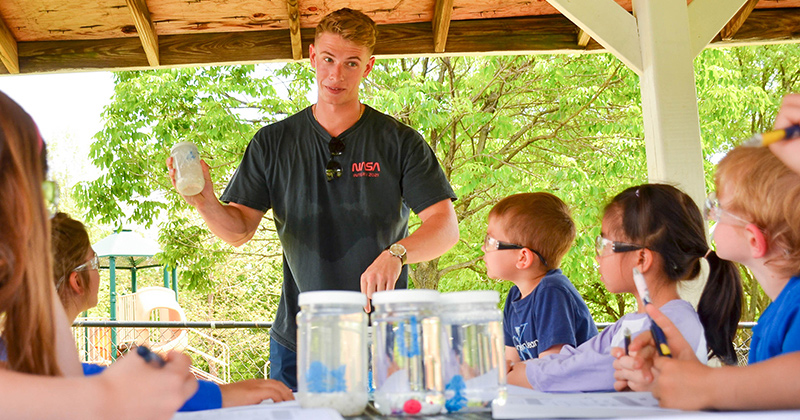
Up, up and away
Photo by Tyler Van Buren June 21, 2023
Three recent UD engineering graduates translated their space research into outreach for pre-K students at the UD Early Learning Center
On a warm Friday morning in early May, more than 30 pre-K students from the University of Delaware’s Early Learning Center (ELC) experienced what it’s like to jump on the moon, pretended to be different types of fluid flow, and launched their own miniature rockets into the sky.
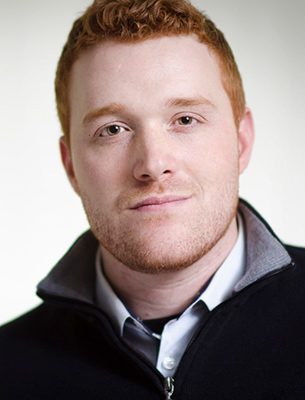
This interactive, hands-on outreach activity was designed by 2023 graduates Andrew Marino, Brenden Swanik and Nick Ulizio as part of an honors project related to their work on a device that will travel to the International Space Station (ISS). Along with learning about gravity, turbulence, space and data collection, the goal of the outreach event was to give 4- and 5-year-old children the chance to experience the excitement of science.
Embracing the challenge
This NASA-sponsored research project is led by Tyler Van Buren, assistant professor of the College of Engineering’s Department of Mechanical Engineering, and is part of NASA’s Established Program to Stimulate Competitive Research (EPSCoR) program. Since Spring 2022, Van Buren has supervised several undergraduate students as they developed a “CubeLab,” a small rectangular device that can conduct experiments on particle flow and the effects of turbulence in zero gravity.
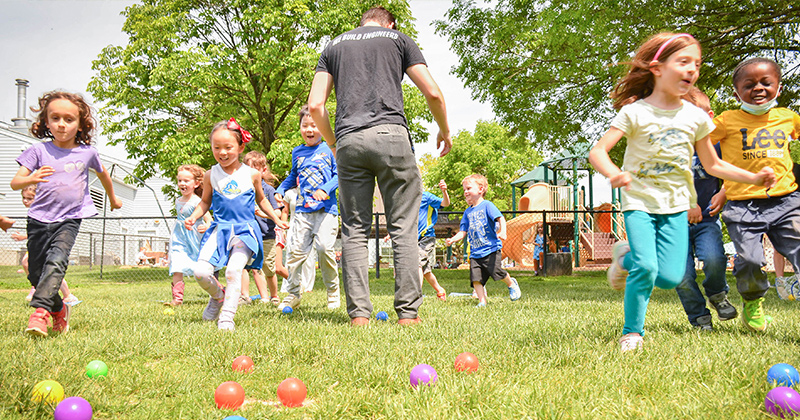
When Marino, Swanik and Ulizio were looking to complete an honors project related to the CubeLat, Van Buren asked them to develop a pre-K educational outreach activity. He has previously done outreach at ELC, including “Window Science” during the pandemic, and was interested in challenging his students to explain their research to a much younger audience.
“My perspective is that if you can teach this age group something about your work, it shows that you truly understand it,” Van Buren said. “I like to challenge my students because I think that as they pare it down and digest the information for younger students, it also forces them to learn more about the topic themselves.”
Marino, a mechanical engineering alumnus from Roxbury, New Jersey, added the task of translating these concepts was initially very difficult, especially as they hadn’t had much experience communicating the complex ideas underlying their research to others outside of the field, let alone to children. “We had to sit down and rethink how we would explain our work. In the end, our focus was to teach them how to think like scientists — how to use their senses, try new things, and make observations. Those skills really go a long way,” he said.
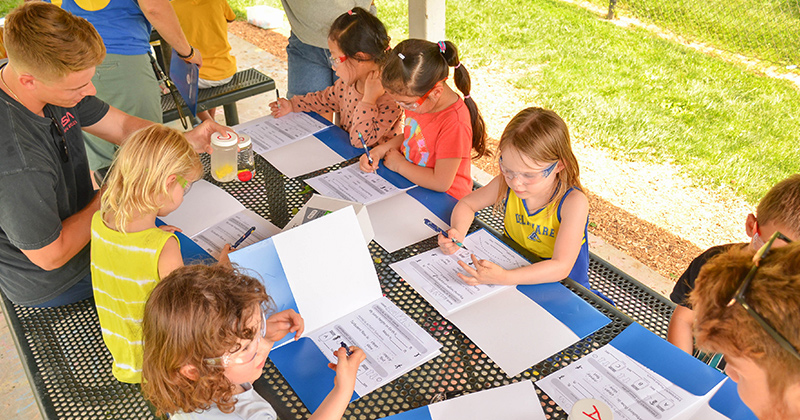
Ulizio, a mechanical engineering alumnus from Middletown, added that shifting their focus to creating a memorable experience helped them strike the right balance between learning and fun. “We wanted to find a way to explain the most basic parts of our research in the simplest possible way,” Ulizio said. “In the end, our goal was to focus more on their excitement, so they remembered what they did and that it was cool, rather than just learning the concepts.”
Swanik, who is from Moorestown, New Jersey, is a biomedical engineering alumnus and recipient of the Alexander J. Taylor Sr. Award.
“A lot of our activities ended up being more athletic and movement-oriented,” Swanik said about the activities they came up with for the event. “That way, the kids can keep moving and they can engage with the activities, instead of just watching. Overall, we wanted them to associate fun with science.”
All three alumni credit Van Buren as being a “valuable mediator” as they navigated the right balance of learning new concepts and having fun within their activities. The students worked for an entire academic year brainstorming activities in collaboration with Van Buren, who then worked with Cynthia Hartsoe, one of lead pre-K teachers at ELC, to refine the final lesson plan. Graduate students Tony Liang and Frank Tricouros attended the event to assist with the activities.
Inspiring an excitement for science
As the day started during the students’ regular gym time, the event kicked off with physical activities focused on gravity. After jumping jack warm-ups, the pre-K students marked how high they could jump on earth, then did a simulated moon jump where volunteers dressed as “The Moon” lifted and lowered students so their movement was slower and six times higher.
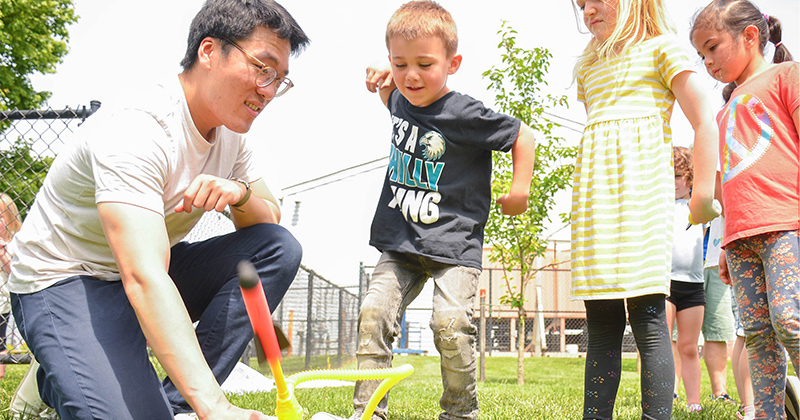
Another physical activity was used to help the pre-K students learn the difference between laminar and turbulent flow. Because laminar flow is clean, slow and organized, ELC students were asked to slowly pick up three balls of a specific color and walk them in a straight line to the other side of a field. They then pretended to be turbulent flow, which is messy, fast, and chaotic, as they completed the same task but this time running as fast as they could.
After the physical activities, students ran their own experiments with a simplified CubeLab, a hand-made “snow globe” filled with particles of different materials, and the pre-K students tracked how long it took for particles to either settle to the bottom or race to the top.
Culminating the hour-long activity was the big finale — a rocket launch. After a larger rocket was launched by UD students, pre-K students got to launch two smaller rockets of their own, one at a low angle and one at a higher angle, and counted the number of steps it took to retrieve the rocket.
Hartsoe explained that children in this age group still do much of their learning through play with an emphasis on physical activities, which was an essential part of the success of this outreach event. “They really thought about this age group, where any learning activities have to be very physical — you can’t just have the students writing things down and listening the whole time,” she said. “And for every learning point, they had a little presentation primer that was then followed by them doing something physical, and that was really great.”
Swanik said it was “incredible” to see how quickly and easily the pre-K students grasped some very complex scientific concepts like gravity. “Once they found out how fun it was, they were so enthusiastic and wanted to keep learning more,” said Swanik. “Their enthusiasm to learn made the whole day really special for me.”
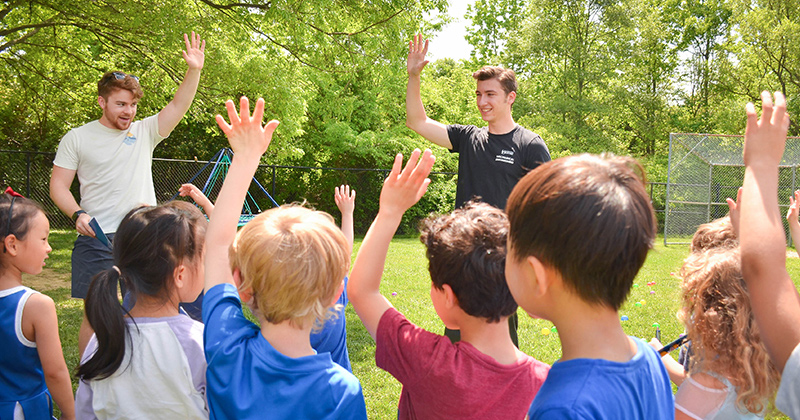
Marino added that it was great to see kids make connections throughout the morning as they carried forward what they learned into subsequent activities. “One of the biggest things I learned is just how curious kids are,” added Marino. “It was great to see how much they wanted to explore and how they were so interested in what we were doing.”
Hartsoe added that a few days after the event, some of the pre-K students in her class were talking to one another about gravity and doing miniature demonstrations by throwing balls up in the air. “I was really impressed that the students got most of the key points,” she said. “Our kids are always excited for people to come in and show what they are doing, and it’s great because they get to talk to experts who can answer any questions they might have.”
Ulizio described the day as “one of his favorite college experiences” and is thankful for the opportunity to spark the next generation’s curiosity. “The best way for someone to learn something is to have questions and go out to find the answers,” he said. “It’s our job to stimulate their interests, because if they are interested, they’ll want to learn even more.”
Van Buren’s next planned outreach activity at the ELC will be for a Navy-sponsored K-12 soft robotics toolkit design project.
“It's always fun to see other people get excited about what you do,” Van Buren said. “With these outreach activities, the end goal is always that kids attach excitement to science and that they remember that it’s exciting to do science.”
Contact Us
Have a UDaily story idea?
Contact us at ocm@udel.edu
Members of the press
Contact us at 302-831-NEWS or visit the Media Relations website

